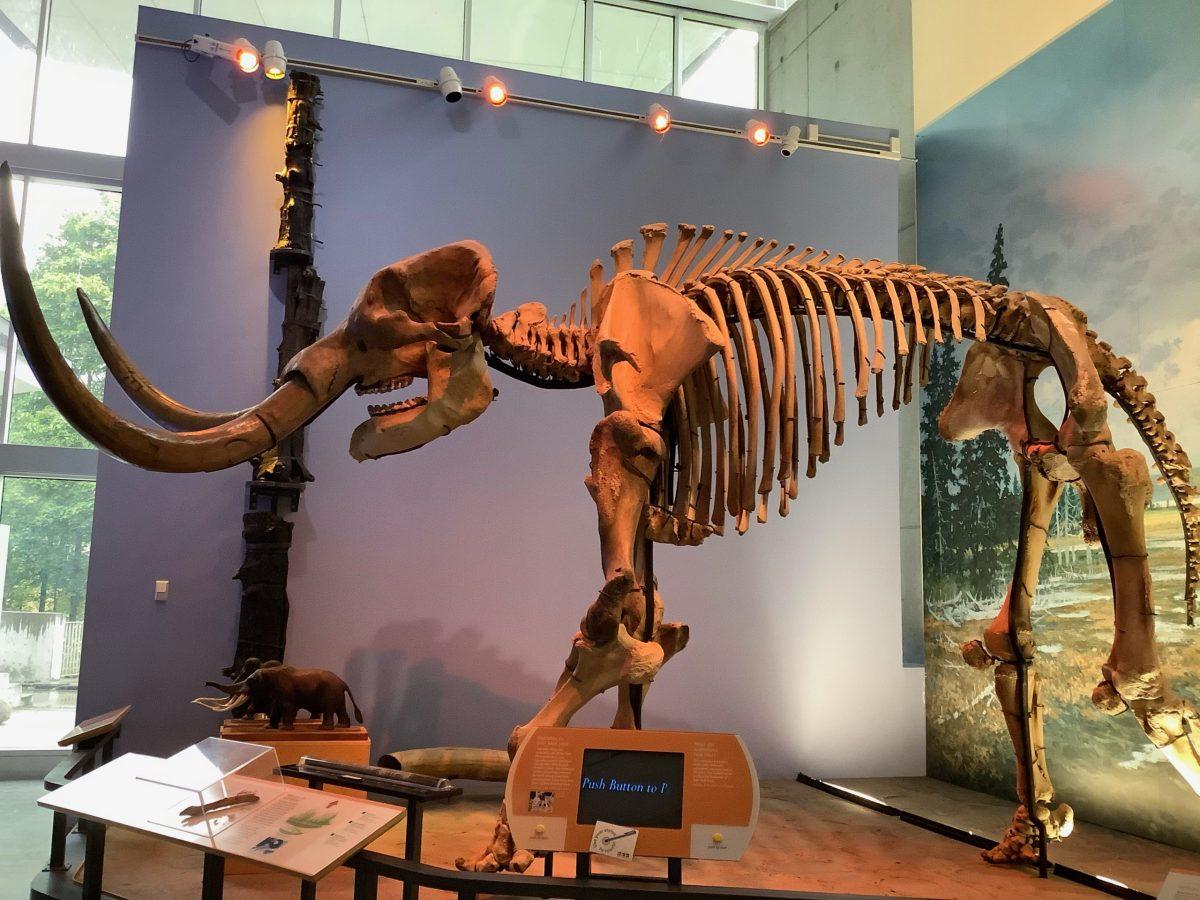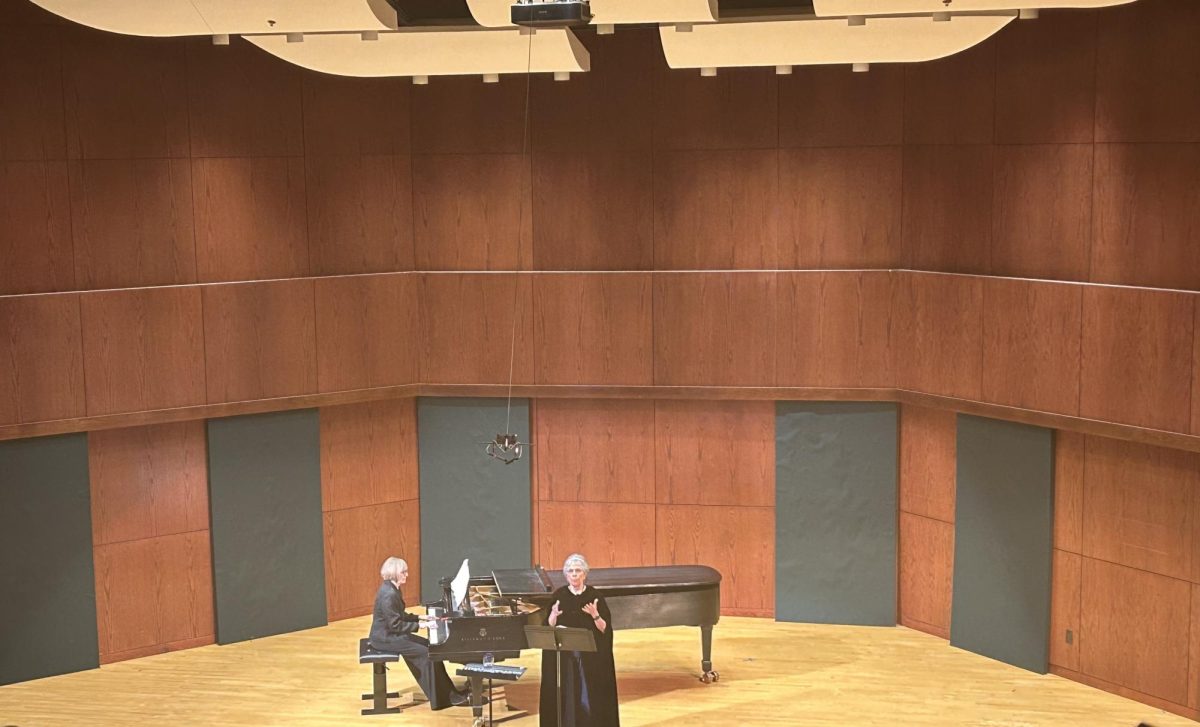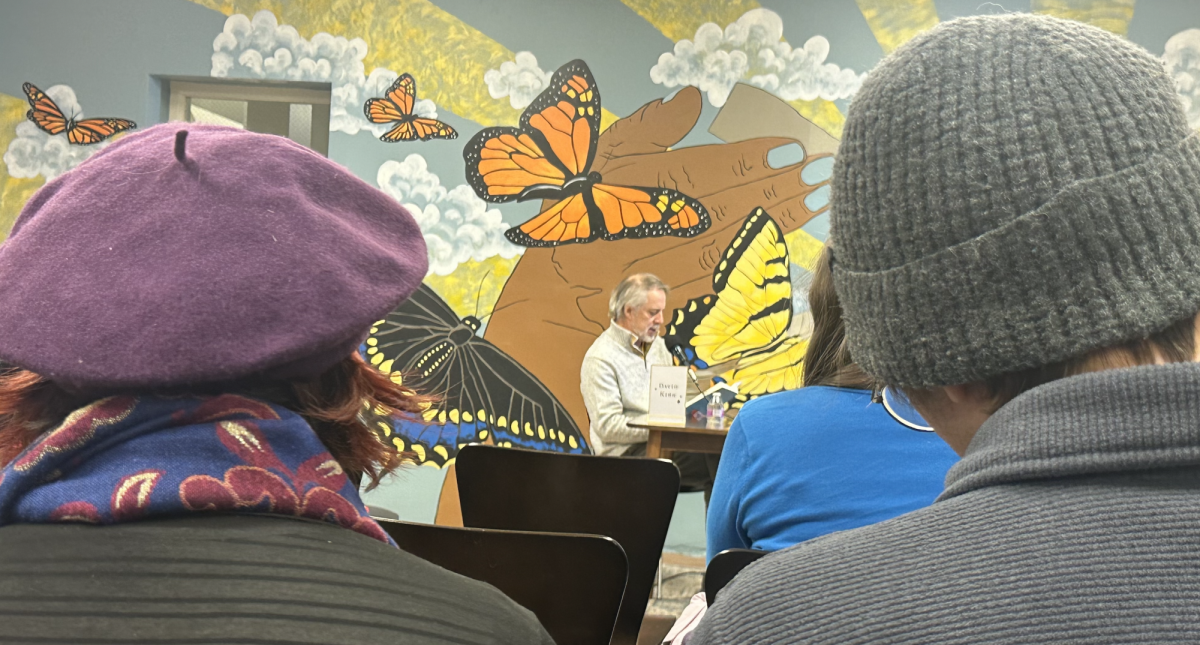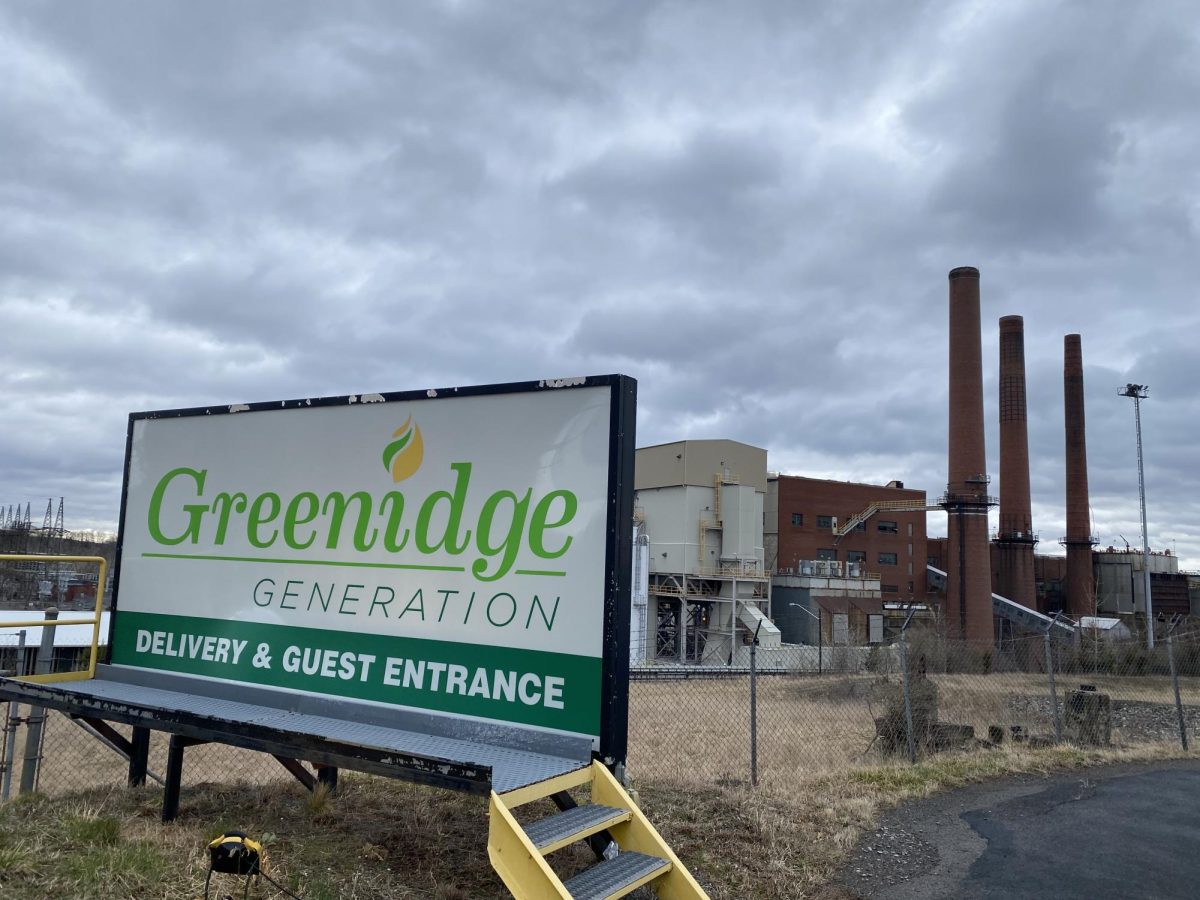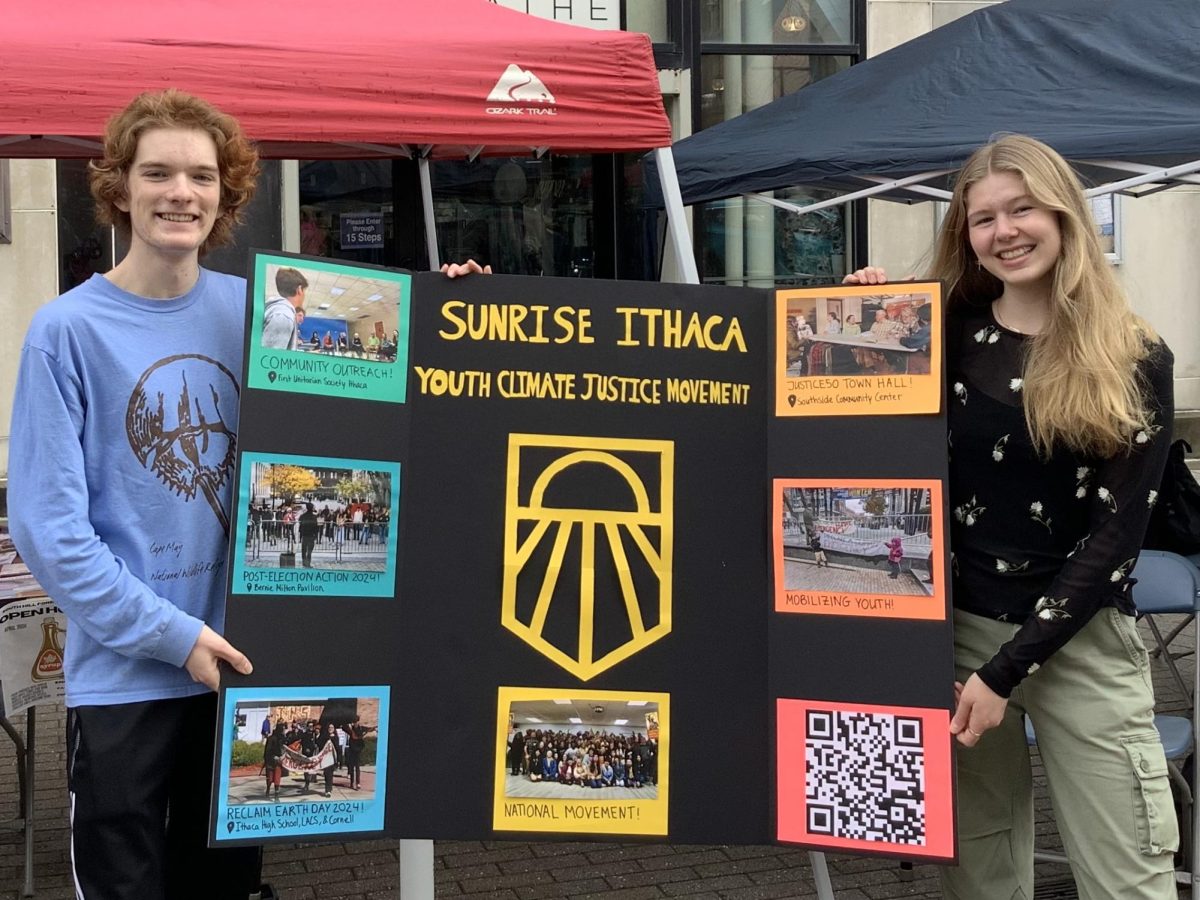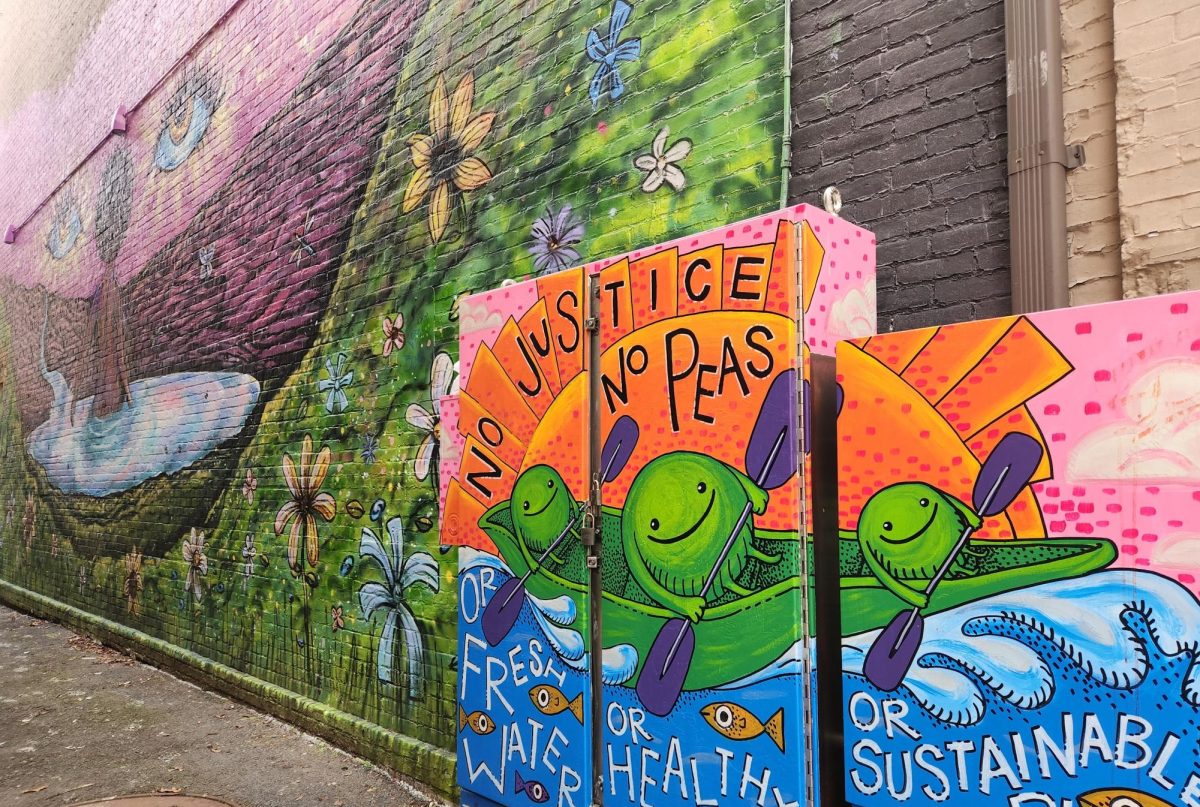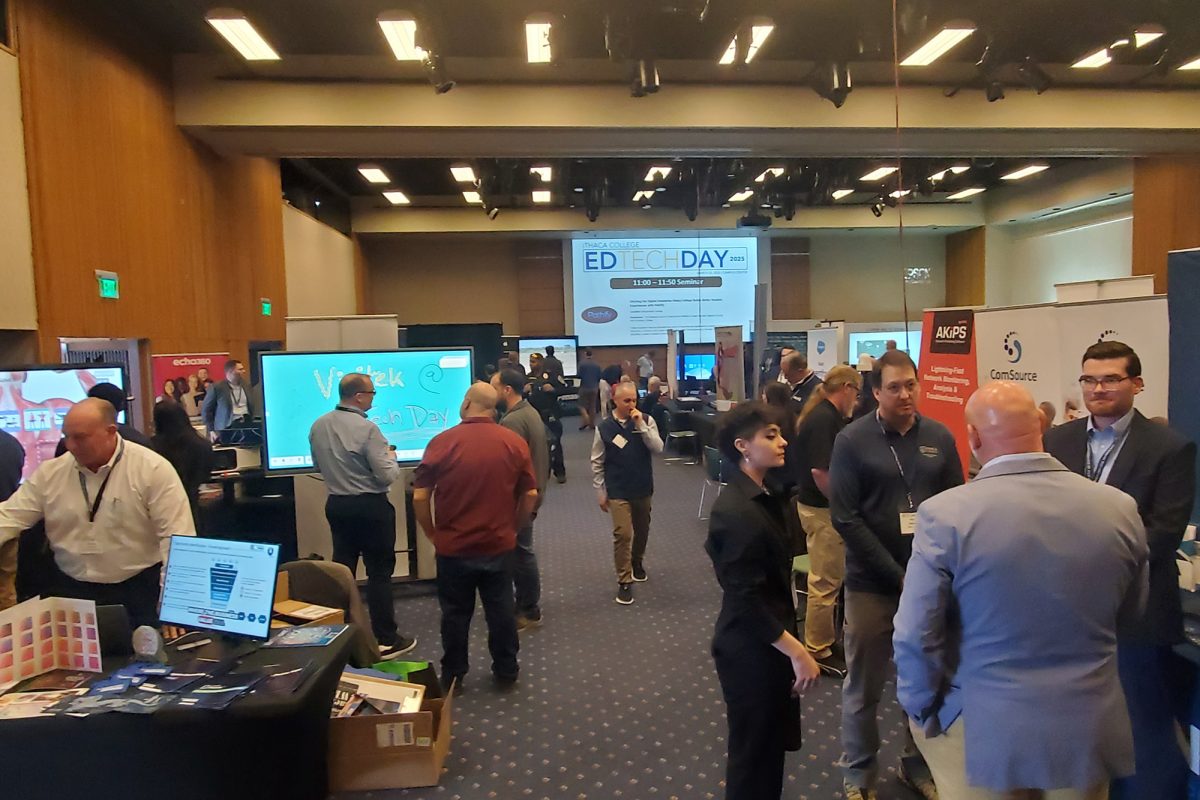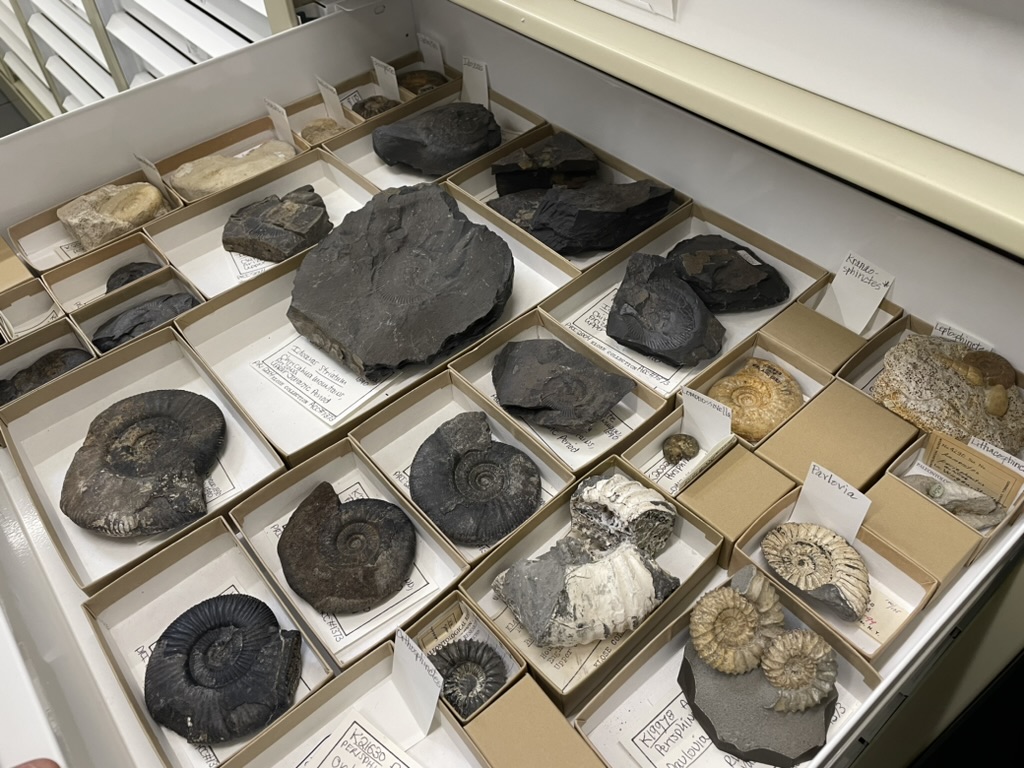
When the Museum of the Earth in Ithaca shut down in March because of the COVID-19 pandemic, only staff members with essential maintenance responsibilities were allowed in the building. Maureen Bickley, education manager and Prep Lab supervisor, went into the museum to take care of the fish tanks.
“It was very strange to not share the museum with other people and just walk through the halls and see our amazing exhibits and know that no one is able to see it,” Bickley said.
The Museum of the Earth, the public exhibit space for the Paleontological Research Institute (PRI), reopened to the general public Aug. 8. The museum is currently open Saturday–Monday, 10 a.m.–noon and 1–5 p.m. During its closure, PRI staff worked to upgrade the museum’s online content and offered virtual programming.
The Museum of the Earth opened in 2003, 71 years after the Paleontological Research Institute was established as a Cornell University affiliate. PRI also runs the Cayuga Nature Center trails and lodge, which is currently closed.
In addition to the main exhibit, the museum has a temporary exhibit space, which usually changes twice a year, PRI Director Warren Allmon said. Currently, there is an exhibit on bees, which was extended because of the pandemic, he said.
All exhibits will now have full versions online, Allmon said. The museum has on its website online versions of the bees exhibit and its upcoming climate change exhibit. The new exhibit will open in-person next year and be permanent.
“After this is all over, we will have a really strong online presence that can go on serving people way outside of Ithaca who will never come to Ithaca, which is great,” said Allmon, “if we can figure out how to keep paying for it.”
He said PRI’s budget comes from a number of sources: a small endowment, individual donors, grants, and earned revenue. Allmon said the biggest source of income is individual donations, which is subject to lots of ups and downs. Museums have taken a financial hit during the pandemic.
“Like everybody else, it’s weird and traumatic and surreal to do what we’re doing,” Allmon said.
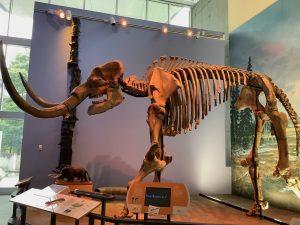
According to a survey of museums conducted by the American Alliance of Museums in June, there has been extreme financial distress in the field. Thirty-three percent of respondents were not confident they would be able to survive 16 months without additional financial relief, while 16% felt they were at significant risk of closure.
Additionally, 44% of survey respondents have furloughed or laid off some staff. Allmon said PRI has not had to lay off any staff during the pandemic.
Bickley said that when she took on the education manager position in 2015, she wanted to get more schools outside of Tompkins County involved with the museum by doing virtual programming but that they didn’t have the technology to do so at the time.
“When this happened, it just kind of forced me to say, ‘You’ve wanted to do this — let’s do this,’” she said. All events will be virtual for the time being.
Andrielle Swaby, director of visitor experience, said the planning process for reopening was very lengthy. She began her current position in June, so she was involved in making detailed plans for how the museum was going to comply with all the guidelines from the state for reopening, she said.
“A big part of it … is the interactive components in the exhibits because there’s a lot of things that people touch and people move and stuff for kids to play with,” Swaby said. “That was one of the most frustrating things for me and for our exhibits person to see was all the things we had to remove.”
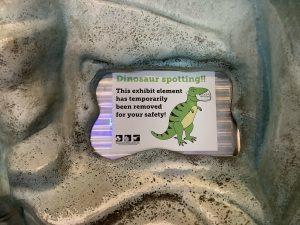
The museum staff does three cleanings on days it is open, including a deep clean from noon to 1 p.m., during which time the museum is closed to visitors, Swaby said. She said that everyone is required to wear masks and that visitors are given styluses to press buttons with.
“Museums are a place of renewal and nourishment and contemplation and that you can get a feeling of thoughtfulness, and that goes for any kind of museum,” Allmon said. “In these times, I hope [visitors] get that.”

